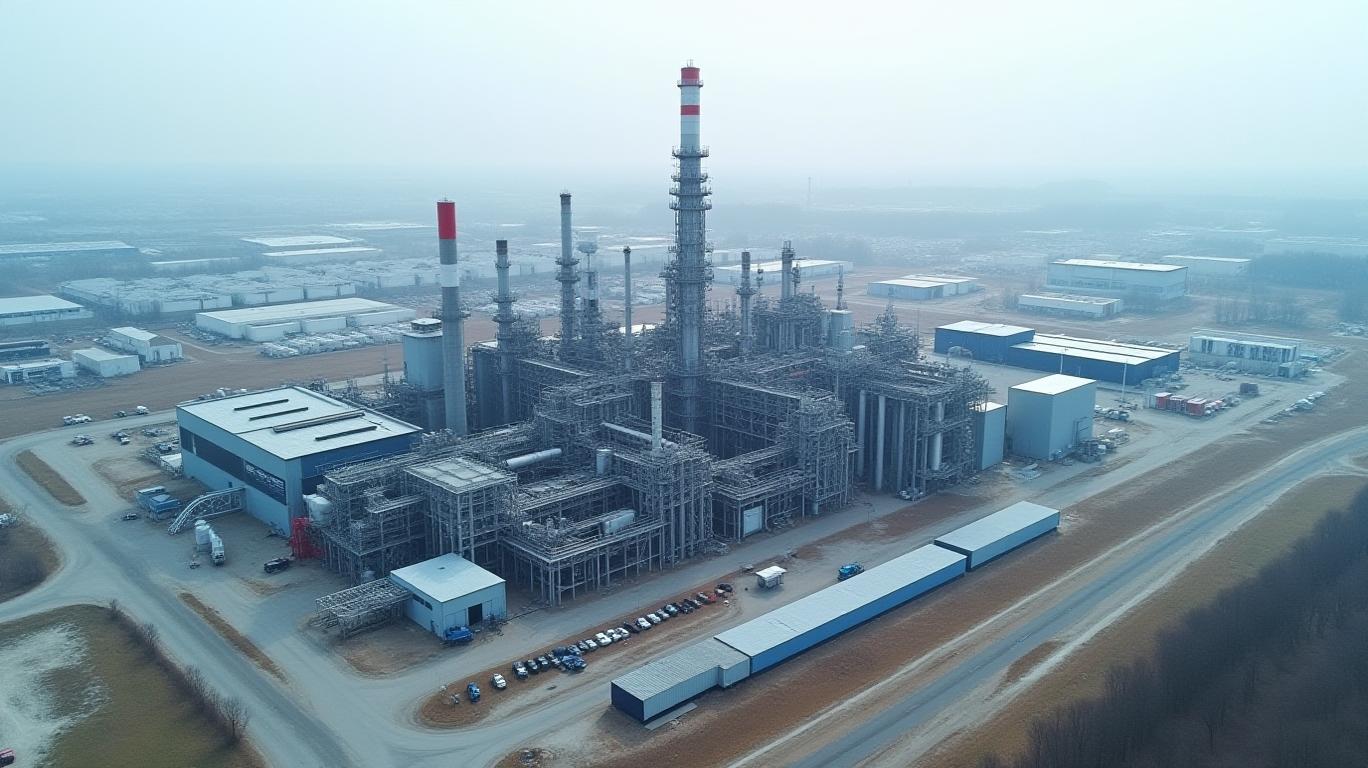Phillips 66 Navigates Volatility in Q1 2025: Strategic Moves and Persistent Challenges
Phillips 66’s Q1 2025 earnings report revealed a complex mix of operational headwinds and strategic progress. While adjusted losses widened due to non-recurring costs and sector-specific challenges, the company reaffirmed its commitment to debt reduction, shareholder returns, and long-term growth through infrastructure investments. Below, we dissect the key takeaways from the results and what they mean for investors.
Financial Highlights: Adjusted Loss Masks Strategic Priorities
The company reported net income of $487 million ($1.18 per share) in Q1, a rebound from Q4’s minimal profit of $8 million. However, an adjusted loss of $0.90 per share underscored the impact of one-time expenses, including $246 million in accelerated depreciation at the Los Angeles Refinery. This adjustment, tied to ongoing upgrades, highlights the trade-off between near-term costs and long-term operational efficiency.

Cash flow remained a focus:
- Operating cash flow fell to $187 million, but adjusted cash flow (excluding working capital) was $259 million.
- phillips 66 returned $716 million to shareholders through dividends and buybacks, maintaining its dividend growth streak with a $0.05 per share hike, marking the 13th consecutive year of increases.
- Total debt dropped to $18.8 billion, trimming the debt-to-capital ratio to 40%, with management reaffirming its $17 billion debt target.
Segment Performance: A Mixed Bag of Strengths and Weaknesses
- Midstream: Adjusted pre-tax income dipped to $683 million, as lower Y-Grade pipeline volumes offset margin improvements in gathering and processing.
- Chemicals: A standout performer, with income rising to $113 million due to 100% global capacity utilization, up from 98% in Q4.
- Refining: The segment’s loss widened to $937 million, driven by lower crude volumes (80% utilization vs. 94% prior), higher turnaround costs ($270 million vs. $123 million), and weak margins despite improved refining margins to $6.81/bbl.
- Marketing & Specialties: Strong international results pushed income to $265 million, up from $185 million.
- Renewables: Pre-tax losses ballooned to $185 million, reflecting the shift from blenders tax credits to production credits and inventory-related headwinds.
Strategic Moves to Mitigate Risks
Phillips 66 is aggressively reshaping its portfolio to prioritize fee-based, low-risk cash flows and strategic infrastructure investments:
1. Sweeny Refinery Upgrades: Completed a $40 MBD crude flexibility project, enhancing operational flexibility and competitiveness.
2. Permian Basin Expansion: Sanctioned a 300 MMCF/D gas processing plant, set to begin operations in 2027, supporting its “wellhead-to-market” strategy.
3. Divestitures: Sold non-core assets for $2.0 billion, including stakes in Coop Mineraloel and Gulf Coast Express Pipeline.
4. EPIC Y-Grade GP Acquisition: A midstream deal described as “immediately accretive,” bolstering NGL infrastructure.
Challenges Ahead
The company faces lingering risks:
- Refining Sector Struggles: High turnaround costs and weak crude utilization may persist, though management emphasized these were managed safely.
- Renewable Transition Pains: The shift to production tax credits has created margin pressure, with international demand for renewable fuels remaining tepid.
- Macroeconomic Volatility: Global oil demand uncertainty and pricing pressures could weigh on refining and midstream volumes.
Outlook: Debt Reduction and Dividend Resilience
Despite Q1’s challenges, Phillips 66 remains on track to reduce debt to $17 billion, bolstered by cash reserves of $1.5 billion and $5.4 billion in undrawn credit facilities. The dividend increase to $0.05 per share underscores management’s confidence in the company’s ability to balance growth and shareholder returns.
Conclusion: Positioning for Stability Amid Uncertainty
Phillips 66’s Q1 results highlight the tension between short-term operational hurdles and long-term strategic ambition. While refining and renewable segments face near-term headwinds, the company’s focus on debt reduction, asset optimization, and high-margin midstream investments positions it to weather volatility.
Crucial data points reinforce this narrative:
- Adjusted EBITDA of $736 million reflects segment resilience outside refining.
- $423 million in capital spending prioritizes projects like the Permian plant, which could yield steady returns.
- $2.0 billion in divestiture proceeds further strengthen liquidity, enabling reinvestment in core assets.
Investors should monitor debt progress and refining margin trends closely. However, the dividend growth streak and strategic clarity suggest Phillips 66 is navigating these challenges with a disciplined, shareholder-focused approach. For now, the company appears to be laying the groundwork for a stronger position in an evolving energy landscape.

_b905d9341749265671656.jpg)








